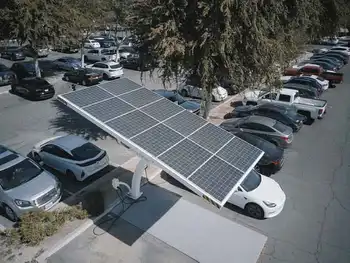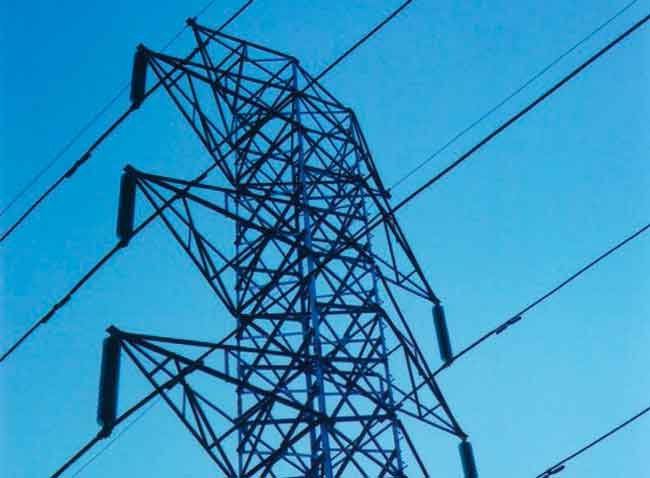EV drivers risk sticker shock
By Investor's Business Daily
Protective Relay Training - Basic
Our customized live online or in‑person group training can be delivered to your staff at your location.

- Live Online
- 12 hours Instructor-led
- Group Training Available
Five years from now they'll still dominate the ranks of efficient-but-affordable autos, analysts say.
"I think it'll be about like it is today, all other things being equal: conventional, diesel, then hybrid in terms of purchase price," said Karl Brauer, editor at auto site Edmunds.com. But if hybrid costs drop and tax perks continue, "you could see them being cheaper than conventional cars."
Shoppers must weigh the fuel savings of an electric or hybrid and the usually higher price tag vs. a conventional car. It can take years, even decades, to recoup those costs.
Batteries make hybrids costly to produce. All-electric vehicles such as the upcoming Nissan Leaf and Ford Focus EV — and the heavily electric Chevy Volt hybrid — require even bigger and more expensive packs. In 10 years, some say, battery price drops could make plug-in hybrids cost-competitive, but perhaps not pure EVs.
Before that, carmakers must meet 2016 fuel standards with whatever technologies and sales tactics they can. "The Obama administration has enacted new fuel economy standards that take it up from the current level of about 26.5 miles per gallon all the way up to about 34 by 2016," said K.G. Duleep, managing director at energy consulting firm ICF International.
This weighted average fuel economy across all vehicles sold is easiest for firms like Toyota and Honda to reach, Duleep says, as they already make many efficient cars, including hybrids. Domestic makers Ford, GM and Chrysler have a longer way to go.
"Among the things we see happening in the short term are conventional technology improvements," Duleep said. "We're also going to see a whole range of new small cars."
Turbocharged smaller engines with gas direct injection and variable valve actuation are among things boosting performance and fuel economy.
Along the lines of the new Chevy Spark, the Ford Fiesta and Toyota Yaris, Duleep says, the coming small cars will get 40 mpg or better and sell for under $15,000. Small conventional cars present a relatively easy U.S. rollout, having already been designed and sold in Europe and Asia.
Lux Research predicts sales of hybrids will hit 3 million a year by 2020, but plug-in hybrids would need oil prices about $200 a barrel to sell that briskly. Oil is currently selling below $72.
High costs and performance drawbacks will restrict electric cars to about 3 of U.S. auto sales in 2020, according to a Deloitte Consulting study.
Toyota's Prius hybrid starts around $22,800 and gets about 50 mpg. Federal tax credits for early-style hybrids are being phased out. But plug-ins will yield tax credits up to $7,500 depending on battery capacity.
For now, someone pays extra for non-conventional cars: consumers, manufacturers selling at a loss, taxpayers subsidizing sales or all of the above. It's especially so with plug-ins, like the Leaf.
"Nissan made a big splash when it released its pricing — $32,780. Once you factor in the federal $7,500 credit you get down to $25,280," said Lux senior analyst Jacob Grose. "If you factor in the $5,000 from the state of California, you're looking at a car that will cost you about $20,000."
That's at the high end of the range for a comparable conventional car, he says without a state credit, buyers can recoup the $5,000 only by not having to pay for gas.
"It's going to take a long time to pay that back," Grose said.
He notes that plug-in buyers need a contractor-installed charger, if the transformer by their homes can even handle it, and the utility and city OK it. He says chargers usually cost a couple of thousand bucks.
The Leaf's lithium-ion battery is a 24-kilowatt-hour "very, very large pack," Grose said.
The Prius, which runs on gas part of the time and regenerates some power when braking, has a 1.3 kWh nickel metal hydride battery.
Cost might be the most stunning thing about the Leaf's power plant.
"The cost of that battery pack in the Leaf today is $22,000," Grose said. "Nissan might be losing money on the Leaf at least initially. "
Batteries should fall in cost due to mass production and technical advances. But even if the battery cost drops to $14,000 or so in a decade, "that's still a pretty expensive pack," Grose said.
Some estimates run much lower. Nissan told IBD that it is not yet disclosing its battery cost.
Lithium ion batteries provide more power at less weight than nickel metal hydride, aiding fuel savings. But the more reliant on electricity a car is, the more substantial its battery pack needs to be vs. today's hybrids.
Diesel cars, far cleaner than the 1980s models, are more economical than hybrids, factoring in the sticker price, fuel savings and incentives, an Edmunds.com analysis found.
For example, Nissan's Altima hybrid carries a $2,348 premium over the regular Altima. Yielding $364 in annual fuel savings, Edmunds calculates the hybrid must be driven 6.5 years to equal the cost of the conventional Altima. Nearby in price, the Volkswagen VOW Jetta diesel's payback vs. the regular Jetta is just 2.4 years.
Among hybrids under $30,000, the Toyota Camry hybrid has the shortest payback, at 1.3 years.
Edmunds assumed 15,000 miles driven at $2.81 per gallon for regular unleaded. That's $1,405 a year for a car that gets 30 mpg, a cost that goes away for EV drivers.
Miles per gallon equivalencies for EVs haven't been finalized. But even if the price of electricity is $0, that $22,000 Leaf battery pack would take 15-plus years to pay for itself.
All-electric vehicles also come with non-economic drawbacks.
"Obviously they're green," Grose said. "But there's range anxiety — the Nissan Leaf has a 100-mile range.... There are a lot of downsides to an all-electric vehicle that are not there for the Prius."
Nissan planned to open Leaf reservations to the general public this Saturday and says sales will start in December.
It has signed up more than 9,500 priority ticket holders — who put down $99 each — since April 20.
Toyota does plan a plug-in Prius in 2012. Grose says it will probably cost less than the $40,000 or so, before incentives, that Chevy's Volt will go for.
The plug-in Volt will run 40 miles on the battery before a small gas engine kicks in to allow more.
Corporate and government fleets use clean natural gas vehicles, but neither those nor hydrogen cars are forecast to have a wide impact on the non-fleet car market soon. Beyond significant technical issues, the lack of filling station infrastructure is a major barrier.
Sweeping new climate legislation unveiled Wednesday would create tax credits for heavy-duty vehicle and trucking fleet use of natural gas. But the bill, sponsored by Sens. John Kerry, D-Mass., and Joe Lieberman, I-Conn., faces long odds.
Fleets are a great opportunity for plug-ins, says Paul Scott, vice president of the nonprofit Plug In America.
"EVs are great for fleets because many fleets have prescribed routes cars will go, 20 or 60 miles," Scott said. "If it's a car with a range of 100 miles, fleets are going to eat this up."
Questions remain on the electric car's future, Brauer says. But "history has proven that whenever an industry moves in a direction and everyone focuses on something, technologies they go after drop in price."











